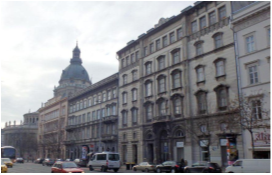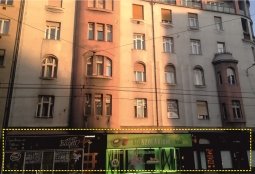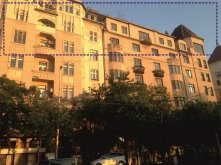The design survey made within the framework of the scientific subject “Problems and Improvements Concerning Architectural, Compositional and Exterior Design of Yerevan Streets and Adjacent Constructions” includes a professional analysis of the streets and adjacent constructions exteriors of the city Budapest.
Keywords: Budapest, Yerevan, architecture, design, exterior, composition, buildings, advertisement
В рамках научно-исследовательского проекта «Проблемы и возможности усовершенствования проектирования, композиции, дизайна и внешнего оформления улиц Еревана и прилегающих сооружений» проводился профессиональный анализ улиц и экстерьеров прилегающих сооружений города Будапешт.
Ключевые слова: Будапешт, Ереван, архитектура, дизайн, экстерьер, композиция, здании, реклама
Within the framework of the surveys on the scientific subject “Problems and Improvements Concerning Architectural, Compositional and Exterior Design of Yerevan Streets and Adjacent Constructions” I visited the capital of Hungary Budapest. There I carried out some observations and analysis on the subject.
This beautiful city, rich with architectural constructions, is situated in the central Europe. It looks well-planned and cultivated. All the architectural constructions, residential and public buildings are in fine condition. The streets are cultivated and furnished with all the needed details.
At the first sight, the city surprised me with its gorgeous architectural constructions, as well as with the diversity of the architectural styles of the constructions. The architectural style of Hungary consists of multiple elements: buildings, of Gothic style to Baroque, Roman style to Modernism, stand side by side. The architecture of Hungary, as well as of the capital Budapest include constructions from 7 ages at once: Roman, Gothic, Renaissance and Baroque, Classicism, Eclectics and Modernism. Many world-famous constructions of the mentioned styles standards are present. They are carefully preserved or are restored and stand up to now, not with standing the fact that Budapest has suffered bombings and ravages many times.
I can state on the projects and the cultivation of the external attributes, that most of them are projected the same way, though the city architects have changed many times, and the city has suffered many ravages.
The buildings adjacent to the streets are projected without interruptions. Most of them are the compositional continuation of one another. Though they differ in their look: the color shades, the number of stores, the decoration attributes. As a construction, they look as a common “environment” (pic. 1), where they not only do not break or distort the general architectural view of the city, but on the contrary, make the interconnection of the city architectural constructions and the streets interesting and diverse.
I carried out the surveys in the city busy avenues Margit and Szent István. During those surveys, I observed and professionally examined not only the facades and compositional construction of the buildings, but also the somewhat changed commercial areas in the ground floors (pic. 2): stores, fast food objects, restaurants, cafes and offices. According to the surveys we can state that all the public objects projected in the city, as well as in the busy districts and large avenues are in the ground floors of the residential buildings. They surely have undergone some changes, but the absolute majority have preserved the lines of the design projects. Neither external, nor architectural constructions of the buildings were distorted. The advertisement panels, lightening letters or other advertising materials do not damage any of the architectural designing compositions, as they are small in size, do not take large spaces, do not obstruct the furnishing of the streets or the traffic regulatory signs. On the contrary, they are made by professionals and do not obstruct the exteriors of the adjacent buildings either (pic 2).
I must add also that the appearances of most buildings adjacent to the main avenues have been changed during years many times: the surfaces were colored (pic. 3), stores were added (pic. 3), front entrances, windows of the ground floors (pic. 4), as well as edges and forms of front entrances were changed, etc.
It is clearly seen in the selected photos that 2–4 stores have been added to the buildings during time (pic. 5), though they have been designed as continuations to the previous constructions and accomplish each other by their composition (pic. 6).
As a result of the surveys we can state, that the streets and adjacent buildings have undergone many construction changes, but those have not influenced the exteriors of the buildings: every change is a result of work of professionals and teams of professionals. From the point of view of ethics, they even please. If their example is used for the Yerevan streets and the adjacent constructions changings, it will contribute to the correct preservation of the city architectural-designing environment.

Fig. 1

Fig. 2

Fig. 3

Fig. 4

Fig. 5

Fig. 6
[1] This work was supported by the RA MES State Committee of Science, in the frames of the research project № 16YR-2A010.
[2] Исследование выполнено при финансовой поддержке Государственного комитета по науке МОН РА в рамках научного проекта № 16YR-2A010.

